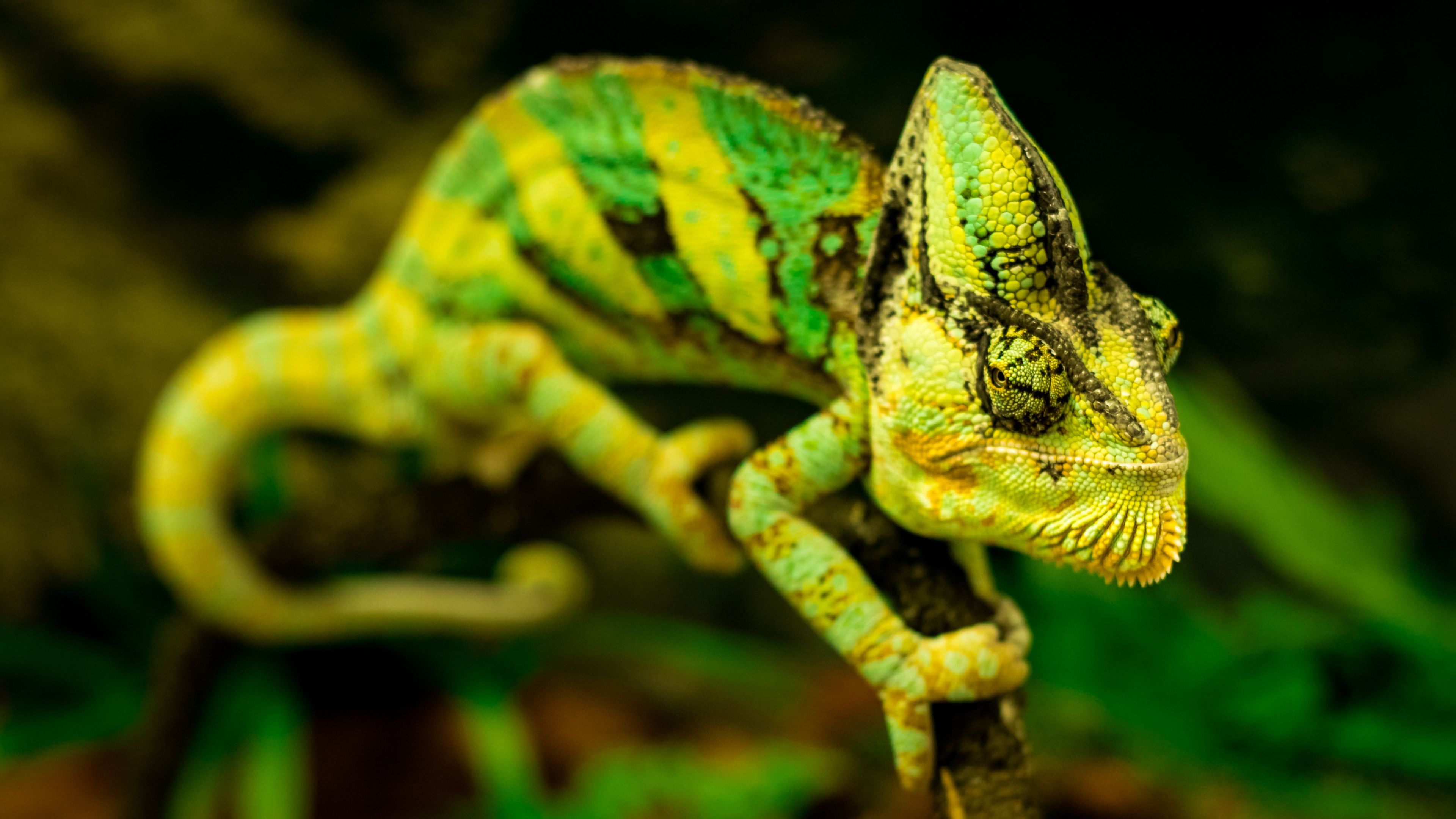Creating a suitable environment for a chameleon involves careful planning and attention to detail. Chameleons are unique reptiles with specific needs that must be met to ensure their health and well-being. This guide will walk you through the essential steps of setting up your first chameleon vivarium, from choosing the right enclosure to maintaining optimal conditions.
1. Planning and Preparation
Research
Before setting up a vivarium, thoroughly research the species of chameleon you plan to keep. Different species have varying needs, particularly regarding temperature, humidity, and space.
Budget
Chameleon setups can be costly, especially when considering the initial purchase of equipment and ongoing maintenance. Plan your budget to cover the enclosure, lighting, heating, humidity control, plants, and food.
2. Choosing the Right Enclosure
Size
Chameleons need ample space to climb and explore. For most species, a minimum of 2x2x4 feet is recommended for adults. Larger enclosures are always better to mimic their natural habitat.
Material
Screen enclosures are preferred over glass tanks as they provide better ventilation, which is crucial for chameleons. Ensure the enclosure has sturdy, escape-proof construction.
3. Lighting and Heating
UVB Lighting
Chameleons require UVB light to synthesize vitamin D3, which is essential for calcium absorption. Use a high-quality UVB bulb (5.0 for most chameleons) and replace it every six months as its effectiveness diminishes over time.
Basking Light
Provide a basking spot with a dedicated basking bulb. The temperature at the basking spot should be around 85-90°F for most species. Use a thermometer to monitor the temperature.
Temperature Gradient
Create a temperature gradient within the enclosure with cooler areas ranging from 70-75°F. This allows the chameleon to regulate its body temperature effectively.
4. Humidity and Hydration
Humidity Levels
Chameleons need specific humidity levels to stay healthy. Most species require humidity levels between 50-70%. Use a hygrometer to monitor humidity.
Misting and Dripping Systems
Install a misting system to maintain humidity levels and provide water for drinking. Chameleons prefer drinking from droplets, so a dripper system can also be beneficial.
5. Furnishing the Vivarium
Live Plants
Incorporate non-toxic live plants like Ficus, Pothos, and Hibiscus. They provide cover, climbing opportunities, and help maintain humidity levels. Ensure the plants are pesticide-free.
Branches and Vines
Add a variety of branches, vines, and perches at different heights and orientations. Chameleons are arboreal and need plenty of climbing structures.
Substrate
Use a substrate that retains moisture without posing an ingestion risk. Options include organic topsoil, coconut coir, or reptile-safe substrates. Avoid substrates like sand or wood chips that can cause impaction if ingested.
6. Feeding and Nutrition
Diet
Chameleons are insectivores. Provide a varied diet of gut-loaded insects like crickets, roaches, and mealworms. Occasionally offer supplements like waxworms or silkworms.
Supplementation
Dust insects with calcium powder at every feeding and a multivitamin supplement once a week. Proper supplementation prevents metabolic bone disease and other health issues.
7. Maintenance
Cleaning
Regularly clean the enclosure to prevent bacterial build-up. Spot-clean daily and perform a thorough cleaning monthly, including disinfecting surfaces and replacing the substrate if needed.
Monitoring
Keep a close eye on temperature, humidity, and overall enclosure conditions. Adjust as necessary to maintain a stable and healthy environment.
8. Tips and Advice
- Handle with Care: Chameleons are generally solitary and stress easily. Handle them minimally to avoid stress.
- Observe Behavior: Regularly observe your chameleon for signs of stress, illness, or discomfort. Early detection of issues can prevent serious health problems.
- Join a Community: Engage with online forums or local reptile clubs for advice, support, and sharing experiences.
Conclusion
Setting up a vivarium for chameleons requires careful planning and ongoing maintenance. By providing the right environment, you can ensure your chameleon thrives and enjoys a healthy life. Enjoy the process of creating a beautiful and functional habitat for your fascinating new pet.




